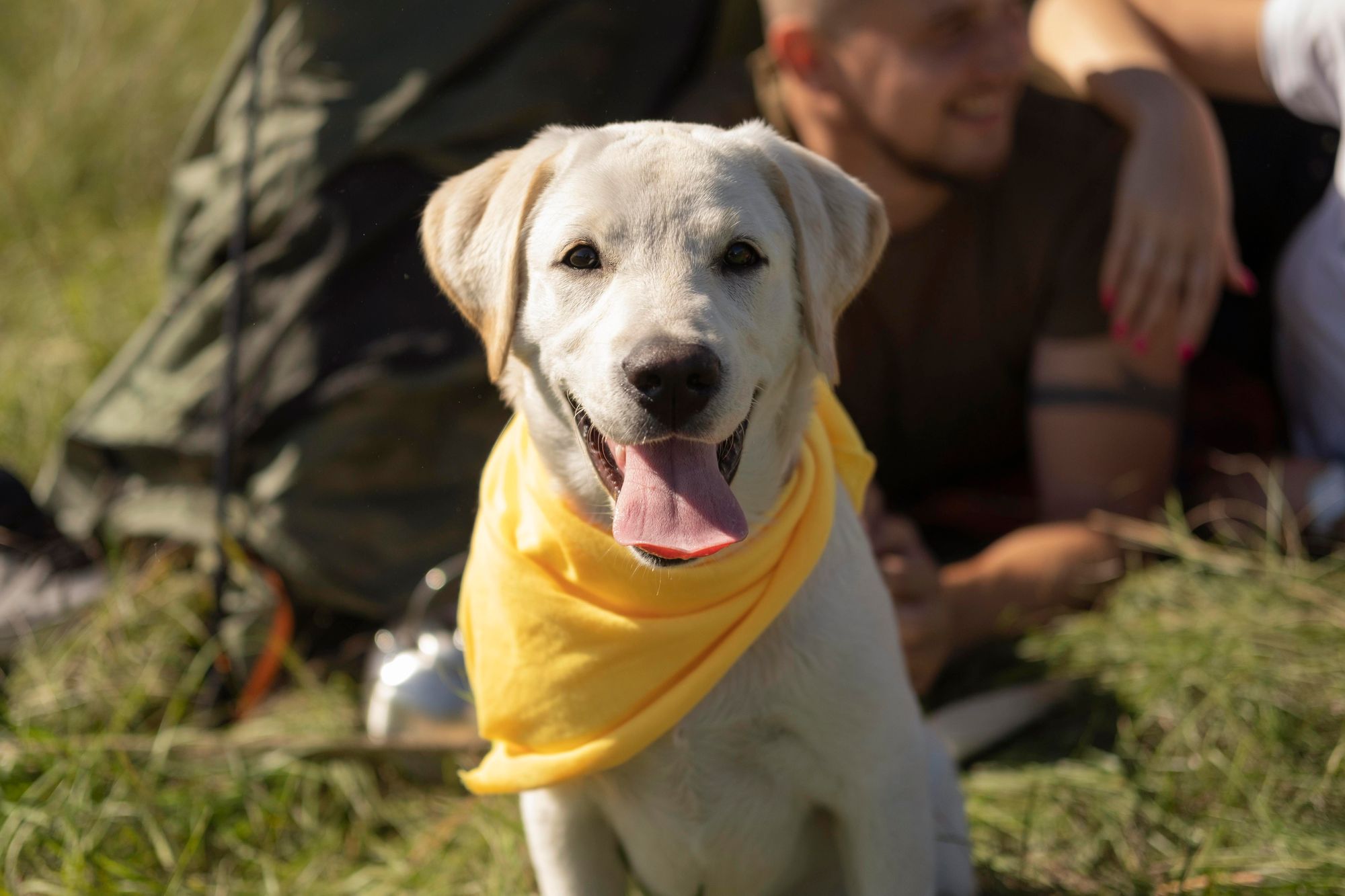
The question "Can dogs survive in the wild?" is one that has intrigued pet owners and animal enthusiasts for years. We've all heard captivating stories of dogs lost for months, even years, before making a miraculous return to their families, seemingly adapting to their circumstances. But are these heartwarming anecdotes the exception or the rule?
Understanding the Domesticated Dog
Before diving into the wild, let's first take a look at our beloved home companions. Dogs were domesticated from wolves between 20,000 and 40,000 years ago. Since then, their lives have intertwined with humans, evolving to understand, communicate, and cooperate with us in ways that other animals can't. This history means that domestic dogs, from your cherished Chihuahua to the ever-vigilant German Shepherd, are fundamentally different from their wild ancestors.
The Challenges of the Wild
The wild can be an unforgiving place. It's a world governed by the rule of survival of the fittest, where food scarcity, predators, harsh weather, and disease are daily threats. For domestic dogs, who have evolved over generations to live in a human-centric world, these challenges can be overwhelming.
Take food, for example. In the wild, a dog must hunt or scavenge for meals. Hunting requires energy, and there's no guarantee of success. They may have to go several days without eating food. And when it comes to scavenging, dogs lack the specialized digestive systems of true scavengers like vultures. They are at risk of ingesting harmful bacteria that can lead to illness or even death.
A Matter of Breeds
Dogs come in all shapes and sizes, from the tiny teacup poodles to the massive mastiffs. This variation in breed also influences their chances of survival in the wild. Small breeds are more vulnerable to predators and harsh weather conditions. Large breeds might fare better in these regards but would need more food to sustain their bodies.
Consider the Siberian Husky, a breed known for its resilience and close resemblance to wolves. Huskies have been known to survive in the wild. Their thick fur insulates them against cold climates, and their hunting instincts can kick in when needed.
On the other hand, take the Bulldog. With their brachycephalic (short-nosed) face, Bulldogs struggle with respiratory issues and overheat easily. These traits, beneficial for a life of leisure in human homes, can be fatal in the wild.

Instincts Versus Training
Underneath the cuddly exterior and wagging tail, dogs are still animals with survival instincts. In desperate situations, these instincts can kick in. We hear stories of lost dogs that manage to find their way home, traveling vast distances over many months. These tales testify to the incredible instincts and adaptability of dogs.
However, a key part of a dog's survival ability also comes down to training. A well-trained dog that understands basic commands like "stay," "come," or "fetch" may have an edge in the wild. Training can help a dog navigate various situations, such as finding food or avoiding danger.
A Tail of Survival: The Story of Luna
Let's consider a real-life example. Luna, a one-and-a-half-year-old German Shepherd, fell off a fishing boat in the Pacific Ocean. The dog was presumed lost at sea. However, five weeks later, Luna showed up on San Clemente Island, a naval facility 70 miles off San Diego.
Naval staff found her on the side of a road on the island. Luna had likely swum to shore and survived by eating small rodents. She was a little undernourished but otherwise healthy. Luna's story shows that, under certain circumstances, a dog can survive in the wild.
The Welfare of Feral Dogs
Turning our attention to feral dogs can also provide some insight into the survival capabilities of dogs in the wild. Feral dogs, or dogs that have been born in the wild with minimal human contact, demonstrate that dogs can survive outside the bounds of human care, although their lives are often fraught with danger and difficulty.
Feral dogs tend to form packs, harking back to their ancestral wolf pack behavior, to increase their survival rates. These packs defend territories, hunt together, and share the responsibility of raising their young. Yet, the life of a feral dog is hardly romantic or idyllic. They often have shorter lifespans due to illness, injury, and lack of food.
Domesticated Dogs Going Wild
In some instances, domesticated dogs have been known to join these feral packs, especially if they've been abandoned or lost. This behavior gives us a glimpse into the latent wild instincts that still exist within our domestic companions.
However, it's crucial to remember that most domesticated dogs would have significant difficulties if they were suddenly thrust into the wild. Most have been bred for generations to suit human environments, losing many of the survival skills they once possessed as wolves.
Stray Dogs Adapting to Urban Jungles
An interesting twist in this discussion is the adaptation of dogs to urban environments. Stray dogs in cities worldwide showcase a remarkable ability to navigate human societies, almost creating their own urban 'wild'.
These dogs can survive by scavenging human waste, seeking out warm places to sleep, and avoiding the dangers posed by traffic and unfriendly humans. They, too, often live in packs and display a unique set of survival skills suitable for their environment.
However, life for these dogs is not easy. They face numerous challenges, including disease, starvation, and mistreatment. Efforts by animal welfare organizations worldwide work tirelessly to improve the lives of these urban dogs.
Surviving versus Thriving
Ultimately, the conversation shouldn't just be about survival—it should also be about quality of life. Yes, some dogs might be able to survive in the wild for some time. But can they thrive? Are they happy, healthy, and fulfilled? For most, the answer is likely no.
A Happy Dog is a Home Dog
For thousands of years, dogs have been our companions, guardians, workers, and friends. They've been bred to work closely with humans, whether as herders, hunters, retrievers, or lapdogs. Their survival instincts, while still present to some degree, are overshadowed by their inclination to be with us, their families.
We can marvel at the adaptability and resilience of dogs. We can celebrate the incredible stories of dogs surviving against the odds. But let's remember that the best place for a dog is in a loving home. Let's provide them with the care, safety, and affection they deserve. After all, they're not just dogs—they're part of our family.
"Fact or Fiction: Can Dogs Survive in the Wild?" The answer is, they might survive, but they thrive best with us.
The Importance of Responsible Pet Ownership
In light of the question "Can Dogs Survive in the Wild?", it's crucial to underscore the importance of responsible pet ownership. When we choose to bring a dog into our homes, we take on the responsibility for their well-being.
Abandoning a pet, or allowing it to roam without supervision, can put the animal at significant risk. It exposes them to potential dangers from traffic, other animals, and exposure to the elements. This also applies to the spread of diseases and parasites that could affect other animals and even humans.

The Role of Animal Shelters and Rescue Organizations
Animal shelters and rescue organizations play a significant role in this context. They provide refuge to stray and abandoned animals, many of which are dogs that could not survive in the wild. These organizations work tirelessly to rescue, rehabilitate, and rehome these animals, ensuring they are cared for and loved.
If you find a stray or lost dog, reaching out to a local animal shelter or rescue organization is often the best course of action. They have the resources and expertise to provide for the animal and find it a suitable home.
Spay and Neuter: Controlling the Canine Population
Part of responsible pet ownership also involves controlling the canine population through spaying and neutering. Uncontrolled breeding, especially among stray and feral dogs, can contribute to overpopulation and a surplus of dogs that cannot survive in the wild. Many of these animals end up in shelters, or worse, on the streets or in the wild where their survival is at risk.
Spaying and neutering are safe procedures that can prevent unwanted litters, reduce the number of stray and feral dogs, and even improve the health and behavior of your pets.
Dogs: Our Companions for Life
The bond between humans and dogs is one of the oldest and most enduring of any human-animal relationship. Dogs provide us with companionship, emotional support, and even physical health benefits. In return, we offer them a safe home, a nutritious diet, regular exercise, and our unwavering love.
So, while the question of whether dogs can survive in the wild is an interesting one, it should not detract from the real issue at hand - providing the best care possible for our canine companions. Remember, a dog is for life. Let's ensure that life is filled with love, care, and belly rubs. Let's remember that our homes are their wild, and that's where they thrive the most.
In summary, "Fact or Fiction: Can Dogs Survive in the Wild?" has a multifaceted answer. While it's possible for some dogs to survive under specific conditions, most dogs are ill-equipped for the challenges of the wild. Their rightful place is with us, their human families, where they are loved, cared for, and protected.
Unleashing the Power of Fi Dog Collars
In a world where technology pervades every aspect of our lives, why should our pets be left behind? The Fi Dog Collar is here to revolutionize how we interact with and care for our dogs. Let's dive into the features and benefits of this modern-day marvel for man's best friend.
Discover the Fi Dog Collar: A New Leash on Life
Fi Dog Collars are more than just a piece of pet apparel. They're designed to bridge the gap between canine companions and their human counterparts through innovative technology. But what makes the Fi Dog Collar so special?
Safety First: Never Lose Track of Your Pup
The standout feature of the Fi Dog Collar is its GPS tracking. If your dog wanders off, you can easily track their location using the Fi app on your smartphone. This feature offers pet parents an unparalleled sense of security. Your adventurous dog might be having the time of their life exploring, but you can be assured of their safety and quickly locate them if needed.
Health Monitoring: Because Every Step Counts
Just like humans use fitness trackers, your dog can now have one, too. The Fi Dog Collar tracks your pet's activity levels, providing valuable insights into their health and fitness. It keeps a record of how many steps your dog has taken, helping you monitor if they're getting the right amount of exercise. It's an effective way to keep an eye on your pet's weight and overall fitness, contributing to a healthier and happier pooch.
Staying Connected: Your Dog's Social Network
The Fi Dog Collar isn’t just a tracking device—it’s a social tool as well. The Fi community lets you connect with other dog owners who use the collar. You can share your dog’s achievements, discuss various dog-related topics, and even organize play dates. Your furry friend will have their own social network, making their lives (and yours) even more enjoyable!

Durability and Design: Stylish Yet Sturdy
While the tech features of the Fi Dog Collar are undoubtedly impressive, it doesn't skimp on aesthetics or durability either. The collar is designed to be as robust as it is stylish. It's made with chew-resistant materials that can withstand your dog's daily activities. Plus, it's waterproof, so you won't have to worry about your pet getting it wet.
Long-Lasting Battery Life: Power That Lasts
One of the many challenges of electronic devices is battery life. But the Fi Dog Collar has addressed this with a long-lasting battery that can run up to three months on a single charge. It means less time worrying about charging and more time for your dog to enjoy their adventures.
The Future of Dog Care is Here
The Fi Dog Collar is redefining what it means to be a pet owner in the digital age. By keeping track of your pet's location, monitoring their health, and offering a unique social platform, it's a game-changer in the world of pet care. This collar doesn't just keep your dogs safe; it keeps them happy, healthy, and connected. So why wait? Discover how the Fi Dog Collar can revolutionize your dog's life today.
Bringing It All Together
Our exploration of diverse canine topics ranging from their survival in the wild to the technological wonders of products like the Fi Dog Collar, has shown us that the world of dogs is as complex as it is fascinating.
We've unraveled the intriguing question of "Fact or Fiction: Can Dogs Survive in the Wild?". We learned that while some dogs might survive depending on various factors like breed and training, most are ill-equipped to face the harsh reality of the wild. Most importantly, we established that dogs thrive best in loving homes, emphasizing the importance of responsible pet ownership, animal shelters, and control of the canine population through spaying and neutering.
Next, we dived into the cutting-edge technology of the Fi Dog Collar, a perfect example of how technological advancement can influence and enhance our relationships with our pets. This tool isn't just a collar but a means of tracking, monitoring health, and building community, acting as a beacon of safety and connectivity for our furry friends.
In conclusion, the journey of understanding our canine companions is filled with both natural wonders and technological marvels. From appreciating their ancestral survival instincts to embracing modern devices designed for their care and safety, we deepen our bond with these loyal creatures. Ultimately, whether it's in the wild or in the realm of technology, our mission remains the same: to ensure the health, happiness, and well-being of our beloved dogs. They aren't just our pets; they are our family.

